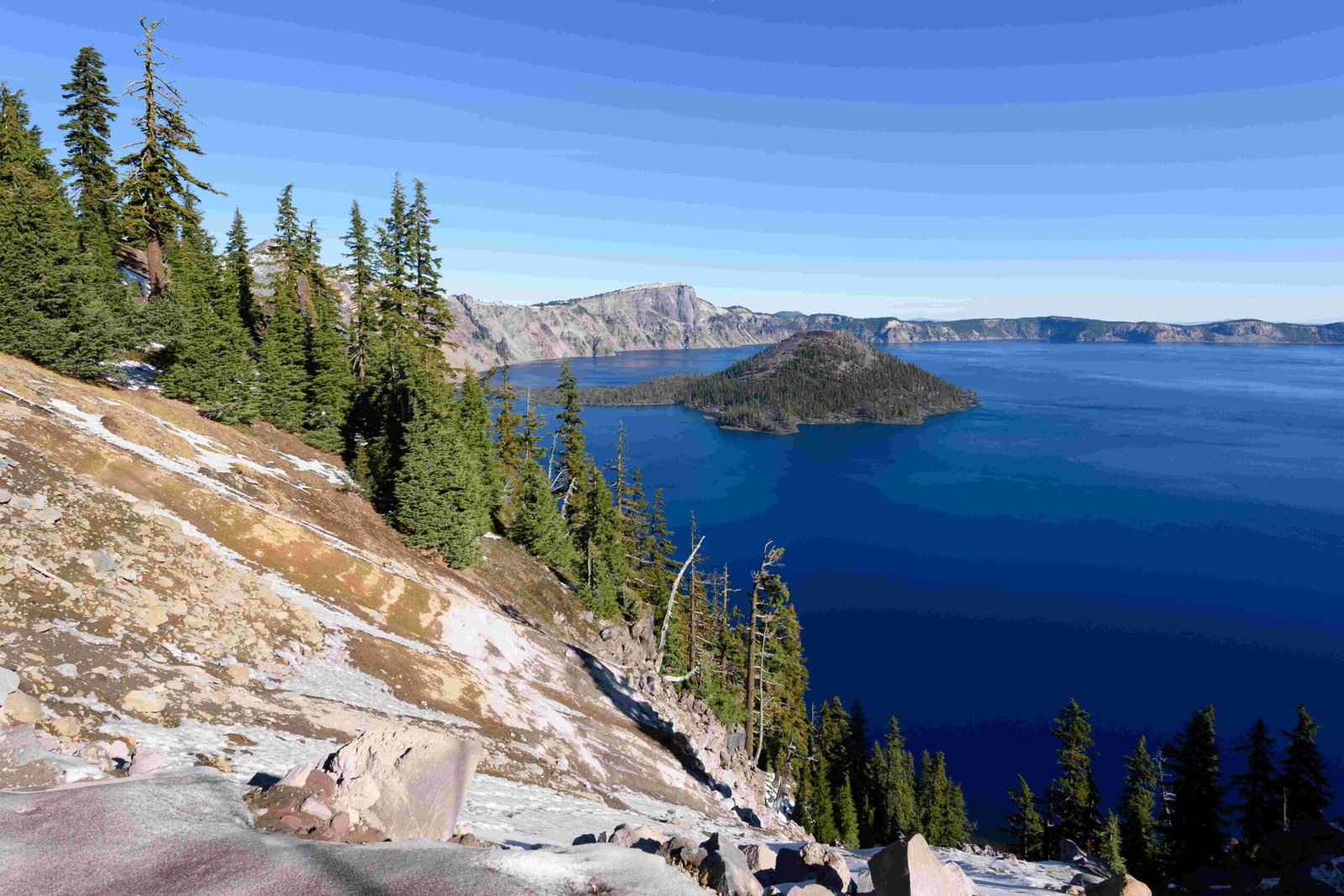Fisher Crater Lake, nestled in the heart of Oregon, is a lesser-known but equally stunning counterpart to the famous Crater Lake National Park. This pristine volcanic lake offers visitors a unique blend of natural beauty, outdoor activities, and geological wonders. With its crystal-clear waters, surrounding forests, and diverse wildlife, Fisher Crater Lake provides an off-the-beaten-path experience for nature enthusiasts and adventure seekers alike.
What is the History of Fisher Crater Lake?

Fisher Crater Lake, like its more famous cousin, was formed by volcanic activity thousands of years ago. The collapse of a volcanic peak created a caldera that eventually filled with rainwater and snowmelt, resulting in the deep, clear lake we see today. Named after a local pioneer family, Fisher Crater Lake has remained relatively untouched by human development, preserving its natural beauty and ecological significance.
How Can Visitors Access Fisher Crater Lake?

Accessing Fisher Crater Lake requires some planning and preparation. The lake is located in a remote area of Oregon, approximately 50 miles southeast of Bend. Visitors can reach the lake via:
- Forest Service roads (high-clearance vehicles recommended)
- Hiking trails from nearby campgrounds
- Guided tours offered by local outfitters
It’s important to note that access may be limited during winter months due to snow and ice conditions.
What Activities are Available at Fisher Crater Lake?
Despite its remote location, Fisher Crater Lake offers a variety of activities for outdoor enthusiasts:
- Hiking: Several trails of varying difficulty surround the lake
- Fishing: The lake is stocked with rainbow trout (catch-and-release recommended)
- Photography: Stunning vistas and diverse wildlife provide ample photo opportunities
- Camping: Primitive campsites are available in the surrounding forest
- Birdwatching: The area is home to numerous bird species
How Does Fisher Crater Lake Compare to Crater Lake National Park?
While both lakes share a volcanic origin, there are several key differences:
| Feature | Fisher Crater Lake | Crater Lake National Park |
|---|---|---|
| Size | Smaller, more intimate | Larger, more expansive |
| Visitation | Less crowded | Heavily visited |
| Facilities | Limited, primitive | Well-developed |
| Accessibility | More challenging | Easily accessible |
| Activities | Focus on primitive outdoor experiences | Wide range of organized activities |
What is the Best Time to Visit Fisher Crater Lake?
The ideal time to visit Fisher Crater Lake depends on your preferences and the activities you wish to pursue:
- Summer (July-August): Warmest temperatures, best for swimming and water activities
- Fall (September-October): Beautiful foliage, fewer visitors
- Spring (May-June): Wildflowers in bloom, potential for lingering snow
- Winter (November-April): Snow-covered landscape, limited access
Are There Any Unique Geological Features at Fisher Crater Lake?
Fisher Crater Lake boasts several interesting geological features:
- Volcanic pumice deposits along the shoreline
- Underwater hot springs that contribute to the lake’s unique ecosystem
- Remnants of lava flows visible on surrounding cliffs
- Obsidian outcroppings in nearby areas
These features provide insight into the region’s volcanic history and ongoing geological processes.
What Wildlife Can Be Observed Around Fisher Crater Lake?
The ecosystem surrounding Fisher Crater Lake supports a diverse array of wildlife:
- Mammals: Black bears, elk, deer, and various small mammals
- Birds: Bald eagles, osprey, woodpeckers, and waterfowl
- Fish: Rainbow trout and potentially other native species
- Amphibians: Pacific tree frogs and long-toed salamanders
Visitors are encouraged to observe wildlife from a safe distance and follow Leave No Trace principles to protect the fragile ecosystem.
How Can Visitors Prepare for a Trip to Fisher Crater Lake?
To ensure a safe and enjoyable visit to Fisher Crater Lake, consider the following preparations:
- Check road conditions and weather forecasts before departing
- Bring plenty of water and food, as there are no services at the lake
- Pack appropriate clothing for changing weather conditions
- Carry a first-aid kit and emergency supplies
- Inform someone of your travel plans, as cell phone coverage may be limited
- Obtain necessary permits for camping or fishing activities
What Conservation Efforts are in Place at Fisher Crater Lake?
Fisher Crater Lake is protected by various conservation measures:
- Limited development to preserve the natural environment
- Restrictions on motorized watercraft to prevent pollution
- Catch-and-release fishing policies to maintain fish populations
- Educational programs to promote environmental awareness
- Volunteer opportunities for trail maintenance and habitat restoration
These efforts aim to preserve the lake’s pristine condition for future generations.
Are There Any Nearby Attractions to Fisher Crater Lake?
While Fisher Crater Lake is a destination in itself, there are several nearby attractions worth exploring:
- Newberry National Volcanic Monument
- Deschutes National Forest
- Bend, Oregon (for urban amenities and craft breweries)
- Smith Rock State Park (world-renowned rock climbing destination)
- Lava Lands Visitor Center (for geological education)
These attractions can be combined with a visit to Fisher Crater Lake for a comprehensive Oregon outdoor experience.
Fisher Crater Lake offers a unique and intimate alternative to more well-known volcanic lakes in Oregon. Its remote location, pristine waters, and diverse ecosystem provide visitors with an opportunity to connect with nature in a truly unspoiled setting. Whether you’re an avid hiker, angler, or simply seeking tranquility, Fisher Crater Lake promises an unforgettable adventure in the heart of Oregon’s volcanic landscape.
